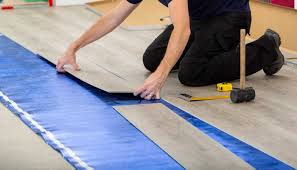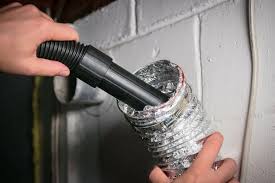What Type of Underlayment is Needed for Hardwood Floors?

Strong 8k brings an ultra-HD IPTV experience to your living room and your pocket.
When it comes to installing hardwood floors, one of the most crucial yet often overlooked components is the underlayment. The underlayment is a layer that sits between your hardwood flooring and the subfloor, and its role is vital in ensuring the longevity, stability, and performance of your hardwood floors. Whether you are remodeling your current space or installing hardwood floors for the first time, understanding what type of underlayment is needed for hardwood floors is essential.
In this comprehensive guide, we will delve into the importance of underlayment, explore the different types of underlayment available, and provide tips on choosing the right one based on your needs. Additionally, we’ll explore how hardwood flooring in Brooklyn can benefit from the right underlayment and what considerations should be taken into account based on the region’s unique environmental factors.
Why is Underlayment Important for Hardwood Floors?
Underlayment serves as an important layer in any hardwood flooring installation. While the hardwood floor is the visible, attractive surface, the underlayment is the unseen support system that enhances the performance and durability of your floors. Here’s why underlayment is essential:
Moisture Protection: Hardwood is highly sensitive to moisture, and exposure to excess water can cause the wood to warp or swell. The right underlayment helps create a barrier that prevents moisture from the subfloor from reaching your hardwood floors.
Sound Insulation: Hardwood floors can sometimes create a loud echo or noise when walked on, especially in apartment buildings or multi-level homes. An appropriate underlayment will absorb and dampen sound, making the floors quieter and more comfortable to walk on.
Enhanced Comfort: Certain underlayments offer a softer, more cushioned feel, making your hardwood floors more comfortable underfoot. This is particularly important in areas where you’ll be standing for extended periods, like kitchens or living rooms.
Leveling and Support: Subfloors are often uneven, and installing hardwood directly onto an uneven surface can lead to instability, gaps, or squeaking. An underlayment can help level out small imperfections in the subfloor, creating a smoother, more even surface for your hardwood floors.
Temperature Regulation: Some underlayments can help regulate the temperature of your flooring. For example, they can provide insulation, keeping the floors warmer during winter and cooler during the summer, which can be beneficial in climates with extreme temperatures.
Different Types of Underlayment for Hardwood Floors
There are several types of underlayment materials available for hardwood floors. Each type offers unique benefits, and choosing the right one depends on your specific needs, subfloor conditions, and budget. Below are the most common types of underlayment for hardwood floors:
1. Foam Underlayment
Foam underlayment is one of the most common choices for hardwood flooring installation. Made from materials such as polyethylene or polyurethane foam, it offers several key benefits:
Sound Dampening: Foam underlayment is excellent at reducing impact noise. It absorbs sound from footsteps, which makes it ideal for apartments, multi-story buildings, or homes with high traffic.
Moisture Resistance: Some foam underlayments come with a built-in moisture barrier, protecting your hardwood floors from moisture that could cause them to warp or buckle.
Affordability: Foam underlayment is a budget-friendly option, which is why it's a popular choice for homeowners in Brooklyn and beyond looking for an economical solution.
While foam underlayment offers good performance, it may not be as durable as other materials, and it may not provide as much insulation in terms of temperature regulation.
2. Cork Underlayment
Cork is a natural and eco-friendly material that provides numerous benefits when used as underlayment for hardwood floors. It’s made from the bark of cork oak trees and is known for its sustainability and natural properties.
Soundproofing: Cork underlayment excels at reducing noise. It absorbs impact sounds, making it a great choice for homes in Brooklyn where reducing noise between floors is important.
Moisture Resistance: Cork is naturally resistant to moisture and mold, which makes it an excellent choice for areas with high humidity or where moisture protection is a concern.
Comfort: Cork underlayment offers a softer, cushioned feel underfoot, making hardwood floors more comfortable to walk on.
However, cork tends to be more expensive than foam and may require more care to ensure long-term performance.
3. Rubber Underlayment
Rubber underlayment is another durable and effective option for hardwood floors, often made from recycled rubber products. It provides excellent soundproofing and moisture control.
Sound Dampening: Rubber underlayment provides superior soundproofing properties. It’s ideal for spaces where minimizing noise is a priority, such as in urban areas like Brooklyn, where sound control is essential in dense housing settings.
Moisture Barrier: Rubber underlayment offers an effective moisture barrier, preventing moisture from seeping into the hardwood flooring and causing damage.
Durability: Rubber is a very durable material that can withstand heavy foot traffic and wear over time, making it ideal for high-traffic areas.
On the downside, rubber underlayment tends to be more expensive than foam or cork, and its installation can sometimes be a bit more complex.
4. Felt Underlayment
Felt underlayment is made from recycled materials like newspaper or wool. It’s a traditional option that provides good cushioning and soundproofing benefits.
Noise Reduction: Felt underlayment can help reduce noise levels, but it may not be as effective as cork or rubber in high-traffic areas.
Comfort: Felt provides a soft, cushioned feel underfoot, which can make hardwood floors more comfortable to stand on.
Moisture Control: While felt does provide some moisture resistance, it’s not as effective as rubber or plastic underlayments when it comes to preventing moisture damage.
Felt underlayment is an affordable option but might not be the best choice for areas with high moisture or extreme temperature fluctuations.
5. Plastic (Polyethylene) Underlayment
Plastic underlayment, typically made of polyethylene, is often used to provide a moisture barrier. It is a thin, smooth layer that sits between the subfloor and the hardwood floor.
Moisture Barrier: Plastic underlayment is an excellent choice for homes in Brooklyn with concrete subfloors or areas that experience high humidity. It effectively prevents moisture from seeping up from the subfloor and damaging the hardwood.
Cost-Effective: Plastic underlayment is often one of the more affordable options, making it a popular choice for budget-conscious homeowners.
However, plastic underlayment does not offer significant cushioning or soundproofing, so it’s often used in combination with other underlayments for optimal results.
6. Combination Underlayment
Some underlayment materials combine multiple elements for added protection and performance. For example, a combination of foam and plastic underlayment can provide both soundproofing and moisture control. These hybrid options offer the best of both worlds and can be ideal for homeowners seeking a balance between comfort, noise reduction, and moisture protection.
Choosing the Right Underlayment for Your Hardwood Floors
When choosing the right underlayment for your hardwood floors, it’s important to consider a few key factors:
Subfloor Type: The type of subfloor in your home plays a major role in determining the best underlayment. For example, concrete subfloors may require a thicker, more moisture-resistant underlayment like plastic or rubber, while plywood subfloors might work well with foam or cork underlayment.
Climate and Humidity: If you live in an area like Brooklyn, where humidity levels can fluctuate, selecting an underlayment with moisture protection is crucial. Moisture from the subfloor can warp or damage hardwood floors, especially during summer months or after heavy rainfall.
Sound Control Needs: If you live in a multi-level home or apartment building, soundproofing will likely be a high priority. In these cases, choosing underlayment with strong sound-dampening properties, such as cork or rubber, is highly recommended.
Budget: Underlayment costs can vary widely depending on the material. While foam is an affordable option, cork and rubber may be pricier. It's important to balance your budget with your need for durability and protection.
Durability and Longevity: Consider how long you plan to stay in your home. If you plan on living in the space for many years, investing in a higher-quality underlayment may be worthwhile. Higher-end underlayment materials like cork or rubber tend to last longer and provide better protection.
Conclusion
The type of underlayment you choose for your hardwood floors is crucial to the long-term success and performance of your flooring. From soundproofing to moisture protection, the right underlayment can significantly enhance your hardwood flooring experience. Whether you are installing hardwood flooring in Brooklyn or elsewhere, it’s important to carefully assess your subfloor conditions, environmental factors, and personal preferences when selecting the ideal underlayment material. By doing so, you’ll ensure that your hardwood floors remain beautiful, stable, and durable for years to come.
Hardwood Flooring in Brooklyn: A Perfect Match for the Right Underlayment
Hardwood flooring in Brooklyn has become increasingly popular due to its timeless beauty, durability, and ease of maintenance. Whether you live in a historic brownstone or a modern apartment, hardwood floors can transform the look and feel of any space. But to ensure that your hardwood floors perform at their best in a region like Brooklyn, where climate and subfloor conditions can vary, choosing the right underlayment is essential.
With the right underlayment, your hardwood flooring in Brooklyn will be protected from moisture, noise, and wear. Whether you’re renovating an old home or building a new one, installing the right underlayment ensures that your hardwood floors will stand the test of time while keeping your space comfortable and stylish.
Note: IndiBlogHub features both user-submitted and editorial content. We do not verify third-party contributions. Read our Disclaimer and Privacy Policyfor details.







